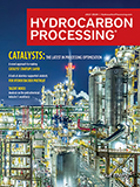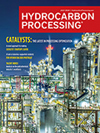Engineering workforce development model co-developed by ISA and the Automation Federation wins national award
The Engineering Competency Model (ECM) — an engineering career development guide that was conceived and co-developed by ISA and its affiliate, the Automation Federation — earned a 2016 Power of A Gold Award from the American Society of Association Executives (ASAE).
ASAE’s Power of A Awards recognize outstanding accomplishments of associations and industry professionals for their efforts to enrich lives, create a competitive workforce, prepare society for the future, drive innovation and make a better world.
The award was formally presented in mid-July to the American Association of Engineering Societies (AAES), which partnered with ISA, the Automation Federation and the US Department of Labor to create the ECM. ISA also is a member organization of AAES.
The ECM is based on the framework and development process used to create the Automation Competency Model (ACM)—a collaborative effort between the Automation Federation and the US Department of Labor that outlines the specific personal, academic, workplace and technical competencies required to succeed in an automation career. The ECM leverages the same design as the ACM in detailing the precise skill sets and competencies needed to become a proficient engineer.
“These two competency models are valuable tools that guide young people toward rewarding careers in STEM-focused fields, and support the greater effort to educate and train a globally competitive workforce,” says Steve Huffman, an ISA and Automation Federation leader who played a pivotal role in the creation of both models.
Career competency models are increasingly relied upon by industry leaders, employers, human resource professionals, educators and workforce professionals to identify specific employer skill needs, develop competency-based curricula and training models and craft industry-defined performance indicators, skill standards and certifications.
Both the ACM and ECM are multi-tiered models that feature a pyramid to depict the required key competencies. The titles of both models’ first three tiers (Personal Effectiveness Competencies, Academic Competencies, and Workplace Competencies) are identical. The upper tiers of the models contrast, reflecting the different technical competencies required of each discipline.
The stakes are high in the movement to build workers capable of competing in high-tech fields. Currently, not enough young people are entering careers in automation and engineering—even though salaries are highly attractive and openings plentiful.
Increasing the supply of workers qualified and prepared to compete for jobs in automation and engineering is a daunting challenge facing manufacturers worldwide. Experts project that over the next 10 years nearly 3.5 M manufacturing jobs in the US alone will be needed.
ISA leveraged the success of the ACM in moving to develop the ECM
Given the strong marketplace acceptance of the ACM as a guide for securing the skills and competencies needed for a career in automation, ISA began to explore the need for a new engineering-focused competency model.
Through discussions ISA held with the US Department of Labor’s Employment and Training Administration and the AAES, all parties agreed to work together to develop a competency model for engineering—with ISA taking the lead on the project.
The development initiative—which drew on the input of subject matter experts from government, academia, professional associations and private industry—required 15 months to complete. Funding was provided by a grant from the United Engineering Foundation.
The ECM was formally unveiled in July of last year.






Comments